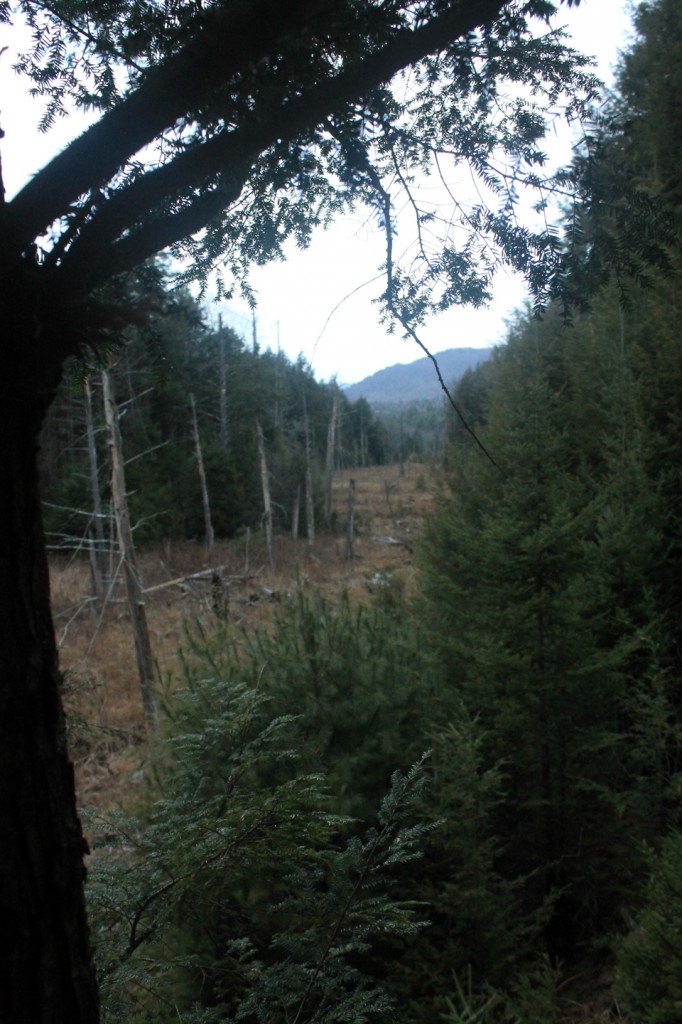 an experience only someone who sits in trees can relate
it looks as sound as the day I built it
and I build up a sweat climbing the 15 feet with my pack, camera,tripod and rifle slung over my shoulder
the view is the same
Spectacular!
North up the beaver meadow 300 yards
South behind me one hundred
game trails crossing from East to West
a trickle of a stream flows by me
what once was a pond long and narrow
A neighboring Balsam has crowded my perch
with the few small branches I break, the most pleasant aroma engulphs my watch
sense of smell is one of the greater gifts I enjoy.
I’ve yet to see a deer from here
but it doesn’t really matter
the view, the creek, chickadees and squirrels
they all keep me entertained
hunting is much more than taking a deer
it’s the solitude
the peace, the calm, the wind, the smell
the outdoors
if a successful hunt is measured in meat and antlers
I have failed miserably
yet….. I have more trophy’s than any man I know
for each day outdoors is an adventure to me
and every adventure is my trophy
an experience only someone who sits in trees can relate
it looks as sound as the day I built it
and I build up a sweat climbing the 15 feet with my pack, camera,tripod and rifle slung over my shoulder
the view is the same
Spectacular!
North up the beaver meadow 300 yards
South behind me one hundred
game trails crossing from East to West
a trickle of a stream flows by me
what once was a pond long and narrow
A neighboring Balsam has crowded my perch
with the few small branches I break, the most pleasant aroma engulphs my watch
sense of smell is one of the greater gifts I enjoy.
I’ve yet to see a deer from here
but it doesn’t really matter
the view, the creek, chickadees and squirrels
they all keep me entertained
hunting is much more than taking a deer
it’s the solitude
the peace, the calm, the wind, the smell
the outdoors
if a successful hunt is measured in meat and antlers
I have failed miserably
yet….. I have more trophy’s than any man I know
for each day outdoors is an adventure to me
and every adventure is my trophy
A Day in a Tree
 an experience only someone who sits in trees can relate
it looks as sound as the day I built it
and I build up a sweat climbing the 15 feet with my pack, camera,tripod and rifle slung over my shoulder
the view is the same
Spectacular!
North up the beaver meadow 300 yards
South behind me one hundred
game trails crossing from East to West
a trickle of a stream flows by me
what once was a pond long and narrow
A neighboring Balsam has crowded my perch
with the few small branches I break, the most pleasant aroma engulphs my watch
sense of smell is one of the greater gifts I enjoy.
I’ve yet to see a deer from here
but it doesn’t really matter
the view, the creek, chickadees and squirrels
they all keep me entertained
hunting is much more than taking a deer
it’s the solitude
the peace, the calm, the wind, the smell
the outdoors
if a successful hunt is measured in meat and antlers
I have failed miserably
yet….. I have more trophy’s than any man I know
for each day outdoors is an adventure to me
and every adventure is my trophy
an experience only someone who sits in trees can relate
it looks as sound as the day I built it
and I build up a sweat climbing the 15 feet with my pack, camera,tripod and rifle slung over my shoulder
the view is the same
Spectacular!
North up the beaver meadow 300 yards
South behind me one hundred
game trails crossing from East to West
a trickle of a stream flows by me
what once was a pond long and narrow
A neighboring Balsam has crowded my perch
with the few small branches I break, the most pleasant aroma engulphs my watch
sense of smell is one of the greater gifts I enjoy.
I’ve yet to see a deer from here
but it doesn’t really matter
the view, the creek, chickadees and squirrels
they all keep me entertained
hunting is much more than taking a deer
it’s the solitude
the peace, the calm, the wind, the smell
the outdoors
if a successful hunt is measured in meat and antlers
I have failed miserably
yet….. I have more trophy’s than any man I know
for each day outdoors is an adventure to me
and every adventure is my trophy
Mouse House?
With winter coming along I figured I would get a jump on cleaning out the nest boxes I built last spring. Since I was late building and hanging them I didn’t have any high hopes of attracting any nesting birds. Out of the 12 I put out only 4 had evidence of nests in them, birds nests that is. There happened to be four other boxes that had mice take up residence and they didn’t look like they were leaving anytime soon. 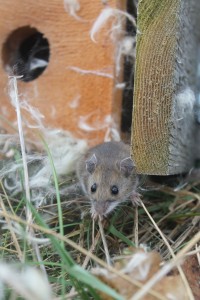 To be totally honest, over all these years I had never cleaned out any of the old nest boxes I had around the property. Its not that I never wanted to, I just got busy every year and never got to it. The first box I got to had a little bit of Milkweed seeds in it. Right away I knew a mouse had been in the box at one time. How did I know that? Well buy the time the Milkweed pods open up and release all their fluffy seeds the birds are well past nesting. The thing I didn’t know was that the mouse was still in there.
To be totally honest, over all these years I had never cleaned out any of the old nest boxes I had around the property. Its not that I never wanted to, I just got busy every year and never got to it. The first box I got to had a little bit of Milkweed seeds in it. Right away I knew a mouse had been in the box at one time. How did I know that? Well buy the time the Milkweed pods open up and release all their fluffy seeds the birds are well past nesting. The thing I didn’t know was that the mouse was still in there. 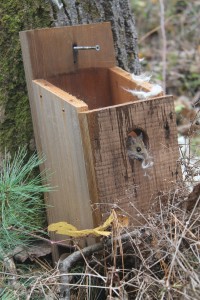 Reaching in I pulled out a handful of cottony seeds and twigs which was fine it was just the mouse hanging by the tail that scared the hell out of me. I never liked mice!!
Reaching in I pulled out a handful of cottony seeds and twigs which was fine it was just the mouse hanging by the tail that scared the hell out of me. I never liked mice!!
I do find it amazing how well the mice had insulated the boxes. There were literally thousands of fluffy milkweed seeds packed into the boxes. I have no clue what the r-value would be but it looked pretty cozy. I’m sure they could have survived the coldest Adirondack winter. As a cold hearted landlord I did evict the first three rodents from their winter digs but I let the fourth one stay. Why? I have no idea, I guess I figured it was useless to try and keep the boxes clean and empty until next Spring. If he’s still there come March when I make my rounds I guarantee he’ll be out on his a$$. After all it’s a bluebird house not a mouse house.
Times of Me
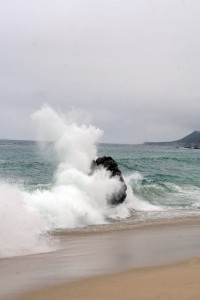 They have never felt that they’re just……nothing!
Overshadowed by the natural world
the rising of the moon, the vastness of the ocean, the color of an autumn day
For some of us, the lucky ones
there are fleeting moments of uselessness interspersed between the times of Me
I long for those moments, dream of them, I crave them.
To be nothing is to feel everything.
I’ve had no greater moments of irrelativeness than simply standing in the dark woods with a billion stars overhead, watching one single snowflake float to the ground, hearing the first spring peepers on a foggy April night.
When you stop to smell the roses, when you take that simple phrase to heart, when you realize the world goes on without you, without all of us
you’ll see the grandeur of it all,
you’ll be nothing, yet feel everything.
They have never felt that they’re just……nothing!
Overshadowed by the natural world
the rising of the moon, the vastness of the ocean, the color of an autumn day
For some of us, the lucky ones
there are fleeting moments of uselessness interspersed between the times of Me
I long for those moments, dream of them, I crave them.
To be nothing is to feel everything.
I’ve had no greater moments of irrelativeness than simply standing in the dark woods with a billion stars overhead, watching one single snowflake float to the ground, hearing the first spring peepers on a foggy April night.
When you stop to smell the roses, when you take that simple phrase to heart, when you realize the world goes on without you, without all of us
you’ll see the grandeur of it all,
you’ll be nothing, yet feel everything.
Autumn Voice
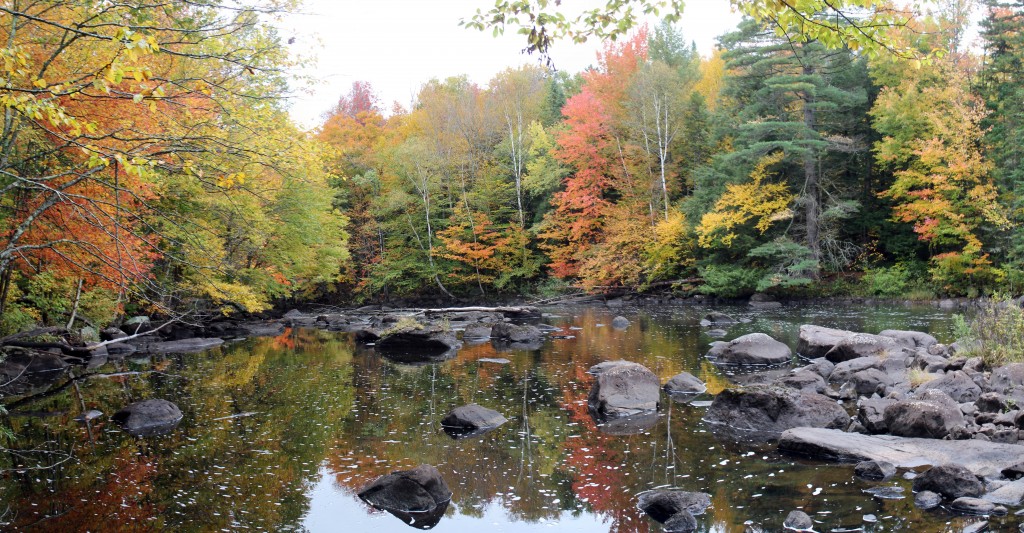
The Wind Blows
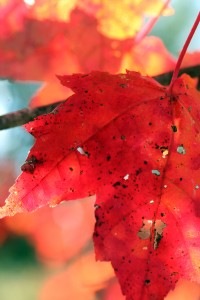 reds and yellows rustle in the breeze
dangling so brilliantly, daintly above me
the colorful landscape reflects in my eyes
towering against the dull gray september sky
like a giant paintbrush waiting to swipe the canvas
the maple waits.
And then…. the east wind blows
leaf stalks that held so tight through so many winds bid farewell
the sky becomes a living watercolor, an abstract of nature
the most accomplished artist of them all.
and the winds die
colors flutter, twisting and turning, tumbling to the earth
the most perfect leaf lights on my shoulder, crimson red on all five lobes
I smell the fall, I smile
and the wind blows.
reds and yellows rustle in the breeze
dangling so brilliantly, daintly above me
the colorful landscape reflects in my eyes
towering against the dull gray september sky
like a giant paintbrush waiting to swipe the canvas
the maple waits.
And then…. the east wind blows
leaf stalks that held so tight through so many winds bid farewell
the sky becomes a living watercolor, an abstract of nature
the most accomplished artist of them all.
and the winds die
colors flutter, twisting and turning, tumbling to the earth
the most perfect leaf lights on my shoulder, crimson red on all five lobes
I smell the fall, I smile
and the wind blows.Help Wanted – Wildflower Photographers
It’s been along time coming and I put it off several times already over the past few years but now we’ve finally, seriously started to piece together a wildflower app for the Eastern part of the country. Were hoping to have the app completed for a Spring 2014 release.
That’s a big IF and I won’t be surprised if it’s actually more like Spring 2015. The app once complete should feature roughly 1,200 wildflowers found in the Eastern United States and Canada. This will be the most complete wildflower app going and it’s a huge undertaking which is why were looking for people across the Eastern US and Canada that might like to help id and photograph flowers for the app.
I can’t promise you’ll be famous but I can promise each individual that contributes over 25 species, full image sets of the plant, leaf and flower, will have their own page in the app. Each contributor page will feature an image of the photographer and their own personal bio. If you love the outdoors, own a camera and have a thing for nature you might just be interested in becoming part of what will be the best app for wildflower identification going. Drop us an email mynature@mynatureapps,com we’d love to have you.
Garlic Mustard
Wildflowers are one of the most beautiful parts of Nature, a palette of colors that paint the landscape.
Garlic Mustard, Alliaria petiolata is no exception. Clusters of small white four petaled, one of the early Spring bloomers, very pretty and very delicate looking. So why do I pull them up whenever I see them growing? Well, because they’re an invasive species of plant. Invasive species are plants that aren’t common to an area, they spread quickly and overwhelm the native species that commonly grow in a certain ecosystem. Some invasive species can actually produce chemicals that invade the soil around them and prohibit native plants from growing. They assure the survival of their own species and eradicate the native plants that inhabit the area. Like most invasive species of plants Garlic Mustard is not fed on by insects or herbivores such as deer and rabbits. This aids in their ability to anchor themselves in an area and eventually wipe out all other species of wildflowers and grasses. This continues up the food chain as well. Once the plant becomes established insects that feed on or nested in the native plants begin to disappear and in turn birds that fed on those insects disappear. It’s amazing on how one simple plant can have such a negative effect on an ecosystem.
The plant is however edible for humans and is why it was introduced here to North America in the first place.The seeds and leaves are both edible and can be ground or chopped to be used as seasonings. When trying to identify Garlic Mustard look for plants with small white flowers no more than one quarter inch wide in clusters on the ends of the plant stem. Each small flower has four petals. The leaves on the plant are alternate on the stem, with long leaf stalks and are egg shaped to triangular in shape. The leaf itself is coarsely toothed and measures up to six inches long. One good method to identify the plant is to crush a leaf between your fingers and check for a garlic aroma. Garlic Mustard can reach a height of three feet and is usually found along roadsides, open woodlands and waste places, flowering from spring to early summer.
If you can positively identify the plant it’s best to pull it up by the roots and dispose of it. Another method which is less destructive to the soil is to cut the stem at ground level. Place all the pulled or cut plants in a garbage bag for disposal or if permitted in your area burn the collected plants.
Above all else please make sure you have a positive identification before you harvest any plants in the wild.
Make Your Own Miniature Greenhouse
Some of my blogs surely do stray away from the app side of things and today’s miniature greenhouse entry is no exception. I’ve always wanted to build my own full size greenhouse and now that the kids are grown and heading their own way I have a lot of time on my hands to do just that. Over the years though I’ve made due quite nicely with a miniature version that fits right on my windowsill and the best part is the cost …….. nothing!!!. Once you have your seeds started and they’ve poked through the soil grab yourself a clear plastic water or soda bottle. You can use a full size liter bottle or if space is at a minimum use the regular 16 ounce bottles. You can always start them off in the smaller one and transfer the pot into the bigger bottle later on if they get to big.
The first thing you want to do is remove the label.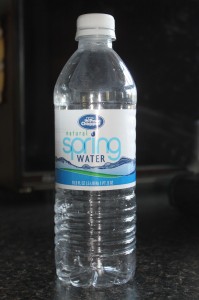 Next, measure up about 1 1/2 inches from the bottom. Take a sharp knife or utility knife and cut a straight line around the bottle at the 1 1/2 inch mark. Don’t throw the bottom away
Next, measure up about 1 1/2 inches from the bottom. Take a sharp knife or utility knife and cut a straight line around the bottle at the 1 1/2 inch mark. Don’t throw the bottom away 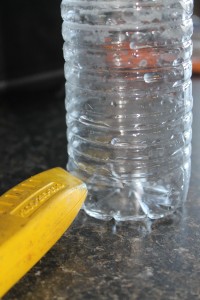 your going to use this to hold your pot in. Place your pot in the bottom piece and then gently slide the top part of the bottle over the bottom piece.
your going to use this to hold your pot in. Place your pot in the bottom piece and then gently slide the top part of the bottle over the bottom piece.
If your having trouble getting the top of the bottle to slide over the bottom use a pair of scissors to cut three vertical lines in the bottom piece, your top should slide over easier now and still fit snugly. Unscrew the cap or slide the bottom back off if you need to water the plants.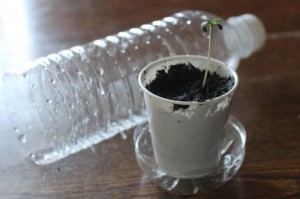 I place a little gravel in the bottom of my bottle for drainage and it also lets the plant sit flatter and not as prone to tip from side to side. All that’s left now is to place your bottles on the windowsill and watch your plants grow. When it’s time to transplant to the garden save those bottles for next season, they’ll come in handy to start all over again.
I place a little gravel in the bottom of my bottle for drainage and it also lets the plant sit flatter and not as prone to tip from side to side. All that’s left now is to place your bottles on the windowsill and watch your plants grow. When it’s time to transplant to the garden save those bottles for next season, they’ll come in handy to start all over again.
I’m sure you’ll enjoy your miniature greenhouse, there’s a lot of satisfaction in starting your own plants from seedlings.
Happy gardening & good luck with that green thumb!!
Building a Bluebird Box
One of the most rewarding ways to connect with Nature and give something back is to construct nesting boxes. This week were going to be taking a look at Bluebird boxes. Even though it’s a little late in the year since most birds have already been busily building their nest, I’ll be posting some “how-to’s” on building nesting boxes for a few different species of birds that reside here in the Adirondacks and over much of North America.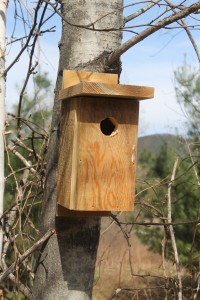 Keep in mind you don’t have to be a master builder to do any of these projects. A handsaw, hammer, finish nails and a power drill are more than sufficient for our needs. Power tools like a chopsaw and table saw make the job that much more easier, but certainly not required. The first thing you’ll need is a piece of 1 x 6 lumber. Pine is the cheapest to buy, stay away from pressure treated lumber as the preservatives in the wood could be toxic to the nesting birds. The plans below are for a flat roofed box. You can make a pitched roof if you choose but for the sake of ease in cutting we’re doing all square cuts. Besides, birds don’t care if the roof is pitched, the important thing is the overall interior size, the hole size and distance from the floor to the hole and where the box is placed.
Keep in mind you don’t have to be a master builder to do any of these projects. A handsaw, hammer, finish nails and a power drill are more than sufficient for our needs. Power tools like a chopsaw and table saw make the job that much more easier, but certainly not required. The first thing you’ll need is a piece of 1 x 6 lumber. Pine is the cheapest to buy, stay away from pressure treated lumber as the preservatives in the wood could be toxic to the nesting birds. The plans below are for a flat roofed box. You can make a pitched roof if you choose but for the sake of ease in cutting we’re doing all square cuts. Besides, birds don’t care if the roof is pitched, the important thing is the overall interior size, the hole size and distance from the floor to the hole and where the box is placed.
Materials you’ll need:
- (1) 5 foot piece of 1 x 6 pine or cedar (natural)
- approximately 16 exterior 1 1/2 inch screws or nails
- (2) 3 inch mounting screws (exterior)
- (1) 4 inch butt hinge
- 1 1/2 inch paddle bit (for entrance hole)
- 1/4 inch drill bit (for ventilation holes)
- electric or battery drill
- hand saw or electric chopsaw
Once you’ve secured a piece of lumber you want to make the following cuts.
- 1 floor piece 4 inches wide by 5 1/2 inches long
- 2 side pieces 5 1/2 inches wide by 9 inches tall
- 1 front piece 5 1/2 inches wide by 9 inches tall
- 1 back piece 5 1/2 inches wide by 14 inches tall
- 1 roof piece 5 1/2 inches wide by 7 1/2 inches long
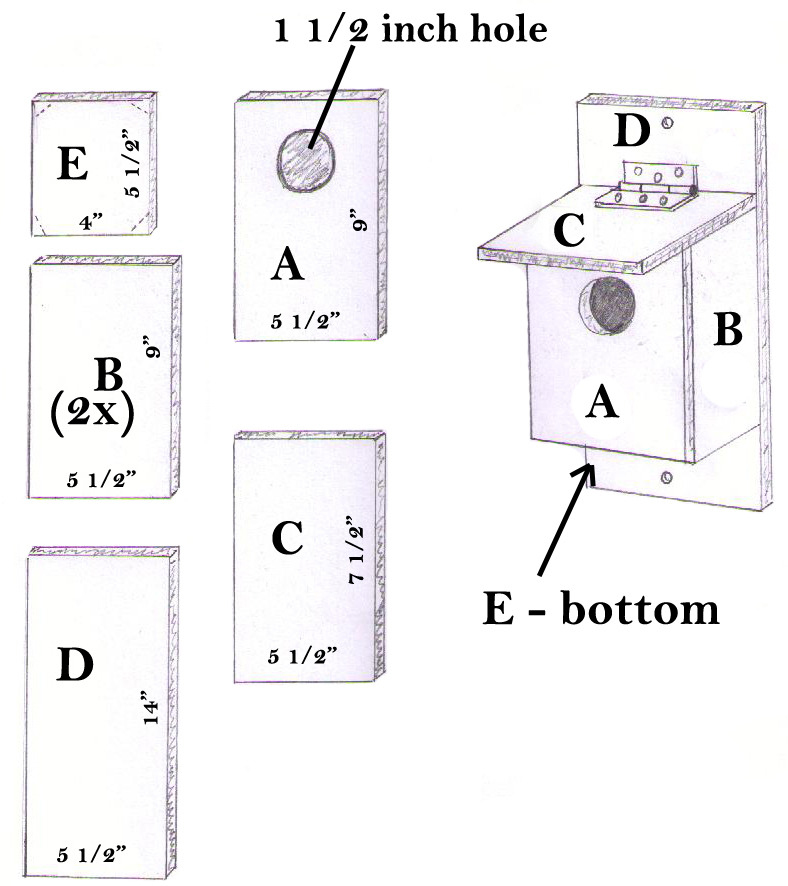
Once you cut the floor piece clip the corners back 1/4 inch at a 45 degree angle to allow for ventilation and water to drain out should any get inside. Assemble the 2 sides to the floor piece on the 5 1/2 inch profile then attach the front panel over the sides. Everything should fit flush. Next attach the partially assembled box to the back panel. Leave about 1 1/2 inches of the back panel sticking down below the floor. This will allow you a surface to attach to the tree later on. Now you can put the roof panel in place, secure this with a 4 inch hinge. You can pick up the hinge at any hardware store for about $3 bucks. You’ll get two hinges in the pack, save the second one for another nest box. The hinge make cleaning each year a lot easier than using screws or pulling nails to get inside. Once you have the box all assembled it’s time to drill your entrance hole. This hole will be 1 1/2 inches wide. Hook your tape measure on the top of the front panel and measure down 1 3/4 inches and measure from the side over 2 3/4 inches . These two marks will be the center of your hole. You’ll need a little ventilation on the sides of the box as well. Just under the roof panel on each side drill (2) 1/4 ” wide holes about 3/4 of an inch down.
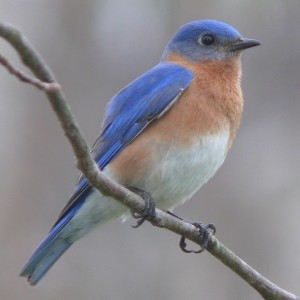 Now that your box is built you’ll want to paint or stain it … DON’T … It’s best to just leave the box natural with no sealer or paint. Paints and stains can be toxic to birds. Pine can last several years untreated, cedar will give you a longer lasting product but is 3 times more expensive than pine. If you absolutely feel the need to preserve the wood then apply a coat of Raw Linseed Oil, use Raw Linseed Oil only, not boiled; Boiled Linseed Oil contains toxins. Linseed oil takes along time to dry so you should only apply a coat to the exterior in the fall once the birds have left. Once the linseed oil has soaked into the surface it makes for a very durable wood. Still after saying that it’s a much better idea to leave the wood natural.
Now that your box is built you’ll want to paint or stain it … DON’T … It’s best to just leave the box natural with no sealer or paint. Paints and stains can be toxic to birds. Pine can last several years untreated, cedar will give you a longer lasting product but is 3 times more expensive than pine. If you absolutely feel the need to preserve the wood then apply a coat of Raw Linseed Oil, use Raw Linseed Oil only, not boiled; Boiled Linseed Oil contains toxins. Linseed oil takes along time to dry so you should only apply a coat to the exterior in the fall once the birds have left. Once the linseed oil has soaked into the surface it makes for a very durable wood. Still after saying that it’s a much better idea to leave the wood natural.
Just as important as the dimensions of the house, maybe even more important, is the placement of the nest box. You can have the nicest Bluebird box but if it isn’t in the right place then you won’t have any Bluebirds nesting in it. Bluebirds prefer open areas with short, low growing vegetation; pastures, mowed lawns, cut fields are all good examples. You should screw the house to a pole, fence post or tree at eye level. If possible place the nest box on the East side of the post or tree to prevent it from overheating inside. Exposed to too much sun the temperature inside the nest box can rise to deadly levels. That’s one good reason to use natural pine as the light colored wood reflects the sunlight rather than absorbing it as dark colors do. If your placing more than one nest box in the same area make sure they’re at least 100 – 150 yards apart. Bluebirds like most animals are territorial and need their own space.
Now that it’s built and hung, it’s time to sit back, relax and give yourself a pat on the back for helping out Mother Nature. If you’re lucky, you may just be rewarded with a beautiful pair of nesting Bluebirds next spring. Well done!!






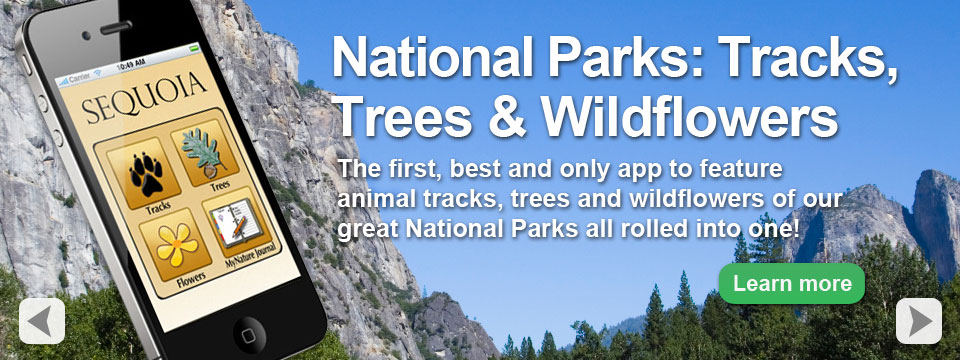
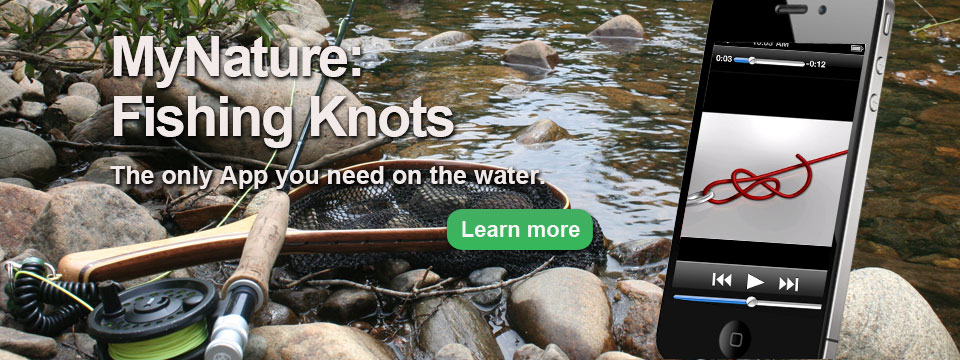

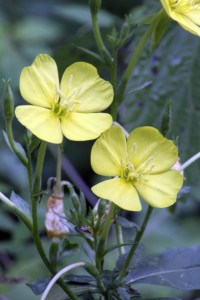
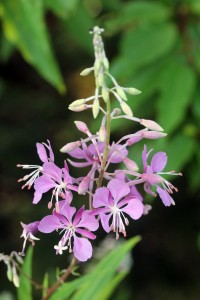
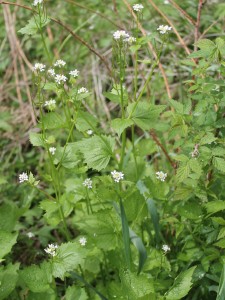
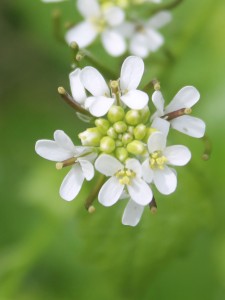







What Others Have to Say